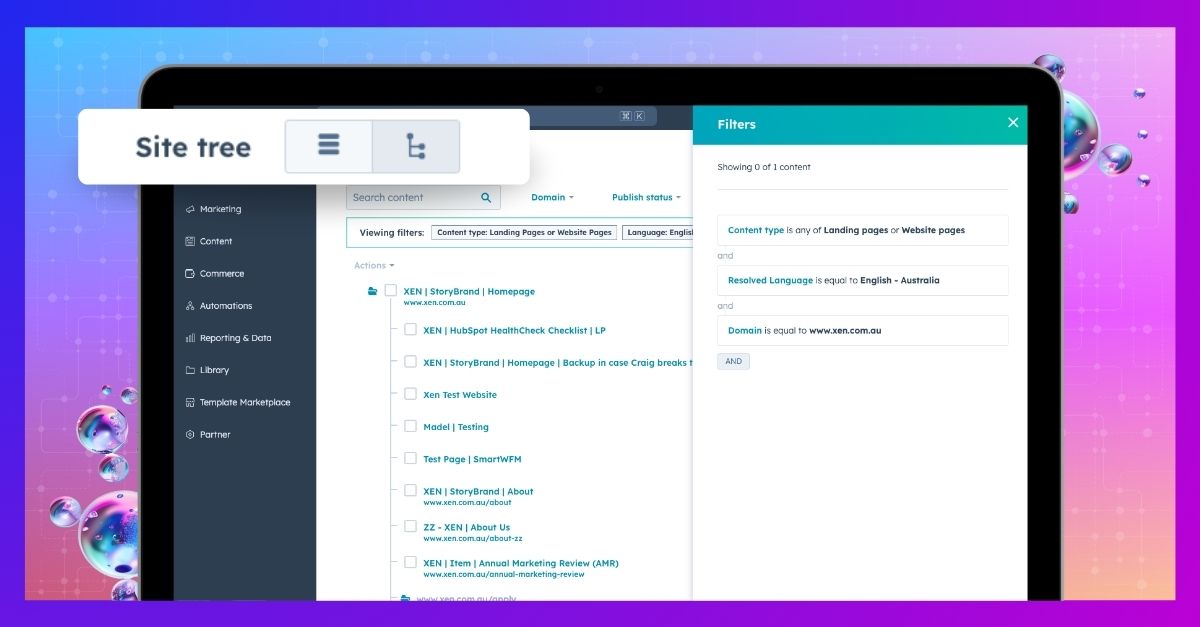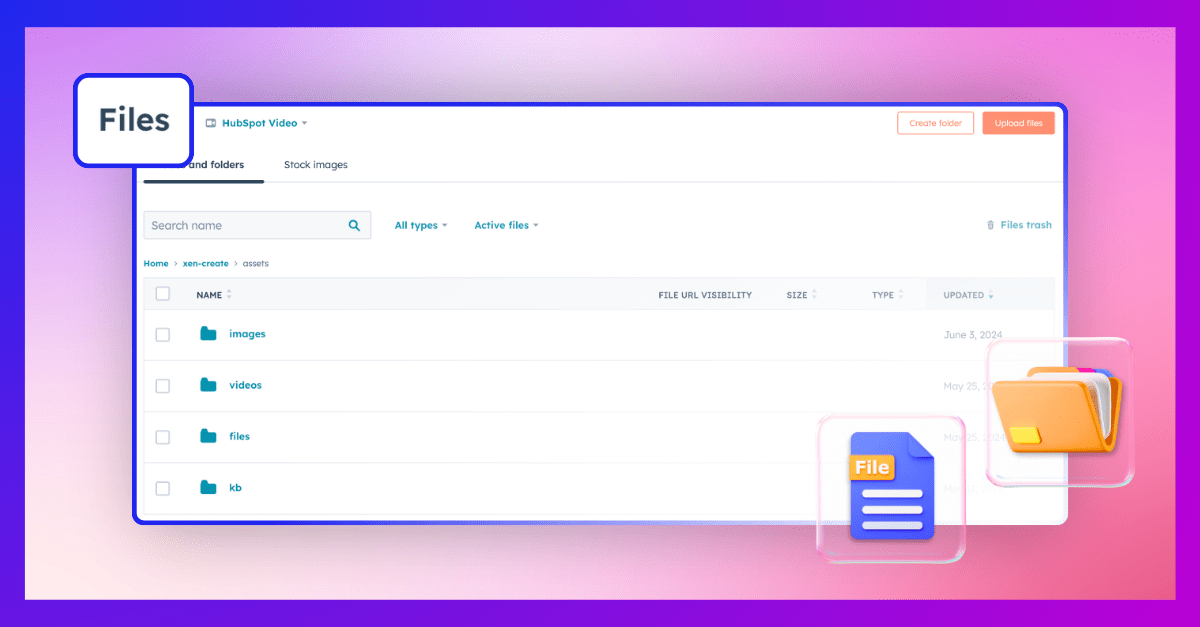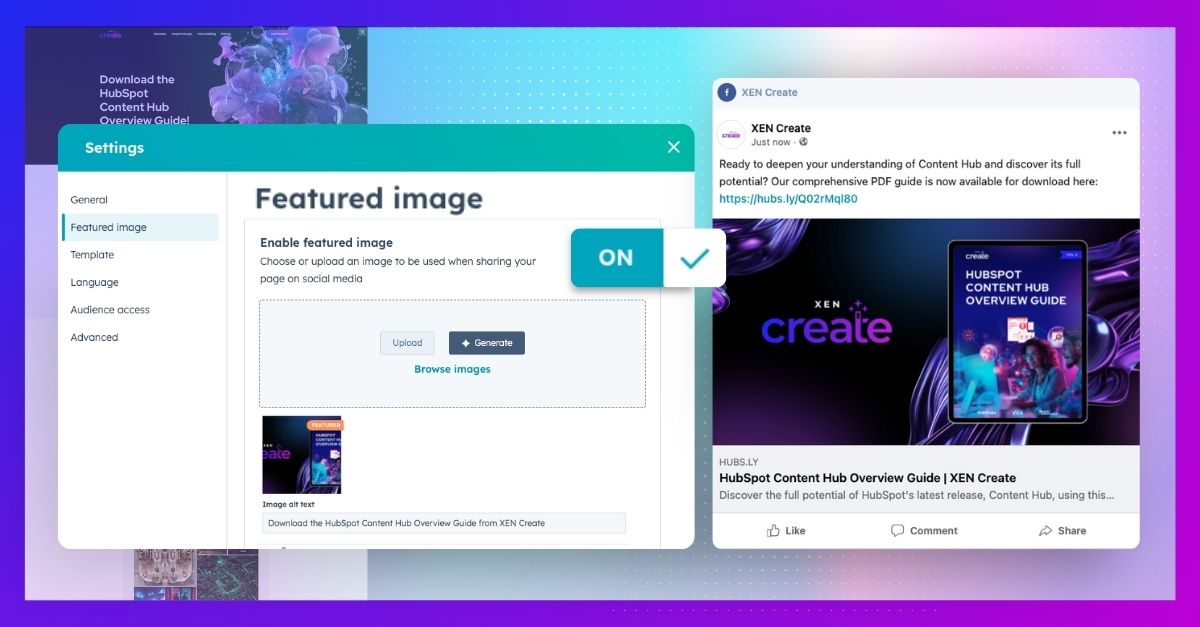Using Files in HubSpot Content Hub: Manage your digital assets efficiently
If you’ve been using HubSpot Content Hub for a while, you're likely familiar with the Files tool. This tool is essential for uploading and managing...
1 min read
 XEN Create
Apr 23, 2024
XEN Create
Apr 23, 2024

A foundational feature of HubSpot Content Hub is its site tree tool, which provides a straightforward folder visualisation for all your pages. Automatically organising your website and landing pages by their URLs, it gives a clear perspective on your page hierarchy—a crucial element we believe is vital for successful website creation.
The funny thing is, it has been there for some time, and you might have missed it. It’s the second button in the top-right corner of your Landing Pages or Website Pages.
Once you click this button, you’ll be able to view your site tree. Within the site tree page, you can adjust what you want to see by clicking More filters.
When the Filters panel opens, you can click on the add button for more filters or hover over a filter and click the trash icon to delete it.
What features does the site tree tool offer?
Now, let's take a closer look at some of the limitations:
The site tree tool provides a clear and effective method to visualise and control your website's layout. It makes organising your landing and web pages easier, improving your workflow with broad filtering options and straightforward page management features. Although it has certain limitations, its advantages in making site navigation and management smoother are undeniable. This tool ensures that your website's structure is fine-tuned for optimal efficiency.
Do you want to dive deeper into HubSpot Content Hub and discover its complete capabilities? Download our HubSpot Content Hub Overview Guide today!
You can also find this guide, along with our other invaluable resources, on our Resources page.

If you’ve been using HubSpot Content Hub for a while, you're likely familiar with the Files tool. This tool is essential for uploading and managing...

Let's start by understanding what a featured image is and why it's important, especially if you're new to website creation. Featured images serve as...

In our previous blog post, we provided a detailed guide on setting up your brand kit in HubSpot. This ensures consistency across all your brand...